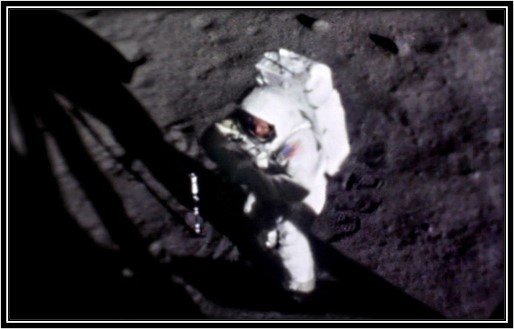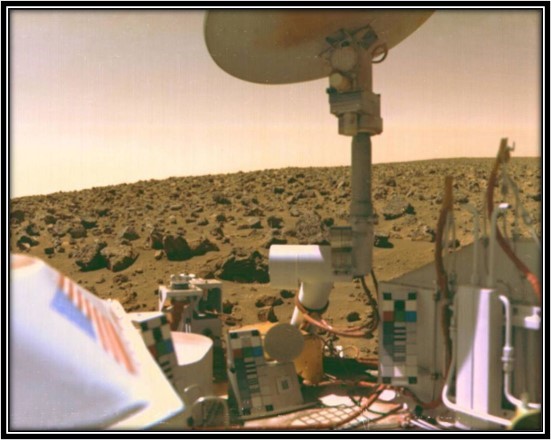Apollo and Viking
Contributor: Barry Fetzer
Sources: History.com and Wikipedia
Good morning. Today we have an outer space “twofer” to celebrate our aviation heritage: Apollo and Viking. “The most Greek of the gods”, according to Wikipedia, “Apollo was the god of archery, music and dance, truth and prophecy, healing and diseases, the Sun and light, poetry, and more.” Vikings were known as great warriors and explorers. And then there’s Emily, a force of nature in her own right.
Emily looks great, at least twenty years younger than her actual age. She has a zest for life. She gets her hair done every week. Not driving any longer, she hires a driver to get to her errands and beauty parlor. She uses a walker but still gets around pretty well…especially considering that she’s 99½ years old. She was born in 1924, five years before the beginning of the “Great Depression” in 1929. When I get up at 5:30 am or so every morning, I often note a light on in her house down the street and around the corner. She said to me one day last week, with sad eyes and exasperated by the pace of technological change, “Everything is changing so fast.”
Emily is right. Let’s take just aviation technology for instance. It took us 120 years to get from the first manned flight when Étienne Montgolfier went aloft in a tethered Montgolfier hot air balloon on October 15, 1783 to the first controlled, sustained flight in a powered airplane flown by Orville Wright in the Wright Flyer on December 17, 1903.
And then it took a little over half that time—66 years—to get from the Wright Brothers’ accomplishment to flying all the way to the moon, landing a man there, and flying all the way back to earth. And then only seven years later, we flew all the way to another planet and successfully landed a Viking Lander there: “The Red Planet”. Mars.
In honor of her 100th birthday, I’m naming this uncontrollable and hard-for-all-of-us to handle pace of change: “The Emily Effect”.
According to History.com: “Today in 1969 at 10:56 p.m. EDT, American astronaut Neil Armstrong, 240,000 miles from Earth, speaks these words to more than a billion people listening at home: ‘That’s one small step for a man, one giant leap for mankind.’ Stepping off the lunar module Eagle, Armstrong became the first human to walk on the surface of the moon.
The American effort to send astronauts to the moon has its origins in a famous appeal President John F. Kennedy made to a special joint session of Congress on May 25, 1961: ‘I believe this nation should commit itself to achieving the goal, before this decade is out, of landing a man on the moon and returning him safely to the Earth.’ At the time, the United States was still trailing the Soviet Union in space developments, and Cold War-era America welcomed Kennedy’s bold proposal.
In 1966, after five years of work by an international team of scientists and engineers, the National Aeronautics and Space Administration (NASA) conducted the first unmanned Apollo mission, testing the structural integrity of the proposed launch vehicle and spacecraft combination. Then, on January 27, 1967, tragedy struck at Cape Canaveral Space Force Station in Cape Canaveral, Florida, when a fire broke out during a manned launch-pad test of the Apollo spacecraft and Saturn rocket. Three astronauts were killed in the fire.
Despite the setback, NASA and its thousands of workers forged ahead, and in October 1968, Apollo 7, the first manned Apollo mission, orbited Earth and successfully tested many of the sophisticated systems needed to conduct a moon journey and landing. In December of the same year, Apollo 8 took three astronauts around the far side of the moon and orbited it 10 times before returning, and in March 1969 Apollo 9 tested the lunar module for the first time while in Earth orbit. Then in May, the three astronauts of Apollo 10 took the first complete Apollo spacecraft in 31 orbits around the moon in a dry run for the scheduled July landing mission.
At 9:32 a.m. on July 16, with the world watching, Apollo 11 took off from Kennedy Space Center with astronauts Neil Armstrong, Edwin Aldrin Jr., and Michael Collins aboard. Armstrong, a 38-year-old research pilot, was the commander of the mission. After traveling 240,000 miles in 76 hours, Apollo 11 entered a lunar orbit on July 19. The next day, at 1:46 p.m., the lunar module Eagle, manned by Armstrong and Aldrin, separated from the command module, where Collins remained. Two hours later, the Eagle began its descent to the lunar surface, and at 4:18 p.m. the craft touched down on the southwestern edge of the Sea of Tranquility. Armstrong immediately radioed to Mission Control in Houston, Texas, a famous message: ‘The Eagle has landed.’
At 10:39 p.m., five hours ahead of the original schedule, Armstrong opened the hatch of the lunar module. As he made his way down the lunar module’s ladder, a television camera attached to the craft recorded his progress and beamed the signal back to Earth, where hundreds of millions watched in great anticipation. At 10:56 p.m., Armstrong spoke his famous quote, which he later contended was slightly garbled by his microphone and meant to be ‘that’s one small step for a man, one giant leap for mankind.’ He then planted his left foot on the gray, powdery surface, took a cautious step forward, and humanity had walked on the moon.
 Neil Armstrong just minutes after landing on the Moon CREDIT : Andy Saunders/Nasa
Neil Armstrong just minutes after landing on the Moon CREDIT : Andy Saunders/Nasa
‘Buzz’ Aldrin joined him on the moon’s surface at 11:11 p.m., and together they took photographs of the terrain, planted a U.S. flag, ran a few simple scientific tests, and spoke with President Richard M. Nixon via Houston. By 1:11 a.m. on July 21, both astronauts were back in the lunar module and the hatch was closed. The two men slept that night on the surface of the moon, and at 1:54 p.m. the Eagle began its ascent back to the command module. Among the items left on the surface of the moon was a plaque that read: ‘Here men from the planet Earth first set foot upon the moon–July 1969 A.D–We came in peace for all mankind.’
At 5:35 p.m., Armstrong and Aldrin successfully docked and rejoined Collins, and at 12:56 a.m. on July 22 Apollo 11 began its journey home, safely splashing down in the Pacific Ocean at 12:51 p.m. on July 24.
There would be five more successful lunar landing missions, and one unplanned lunar swing-by, Apollo 13. The last men to walk on the moon, astronauts Eugene Cernan and Harrison Schmitt of the Apollo 17 mission, left the lunar surface on December 14, 1972. The Apollo program was a costly and labor-intensive endeavor, involving an estimated 400,000 engineers, technicians, and scientists, and costing $24 billion (close to $100 billion in today’s dollars). The expense was justified by Kennedy’s 1961 mandate to beat the Soviets to the moon, and after the feat was accomplished, ongoing missions lost their viability.
And number two of two:
Also, from History.com: “On the seventh anniversary of the Apollo 11 lunar landing, the Viking 1 lander, an unmanned U.S. planetary probe, successfully landed on the surface of Mars.
 Early on July 20, 1976, after nearly a year-long journey, the Viking Lander 1 successfully landed on Mars, the first ever to land on the Red Planet. The landing was a major milestone for the United States and collected the initial data that would lead to further missions on Mars. (Nasa/Jpl)
Early on July 20, 1976, after nearly a year-long journey, the Viking Lander 1 successfully landed on Mars, the first ever to land on the Red Planet. The landing was a major milestone for the United States and collected the initial data that would lead to further missions on Mars. (Nasa/Jpl)
Viking 1 was launched on August 20, 1975, and arrived at Mars on June 19, 1976. The first month of its orbit was devoted to imaging the surface to find appropriate landing sites. On July 20, 1976, the Viking 1 lander separated from the orbiter, touched down on the Chryse Planitia region of Mars, and sent back the first close-up photographs of the rust-colored Martian surface.
In September 1976, Viking 2—launched only three weeks after Viking 1—entered into orbit around Mars, where it assisted Viking 1 in imaging the surface and also sent down a lander. During the dual Viking missions, the two orbiters imaged the entire surface of Mars at a resolution of 150 to 300 meters, and the two landers sent back more than 1,400 images of the planet’s surface.”







